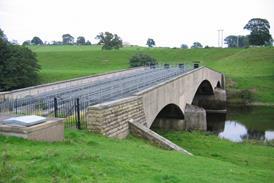Master trust Nest has announced two new participants in its trial of a 'sidecar' savings solution, with employees at Yusen Logistics and the University of Glasgow to be offered the product in early autumn.
Shoe repairer Timpsons was the first company to sign on to the experimental roll-out, which according to Nest went live this week.
We see people actually dipping into their savings as a positive
Katie Salter, Salary Finance
The sidecar model will see pension contributions partially diverted to a Yorkshire Building Society emergency savings account (bearing 0.7 per cent interest) until a threshold of financial resilience is met, at which point they will revert to solely topping up the defined contribution pot. If at any point the employee dips into their savings, pension contributions can again be used to refill it.
Nest has partnered with financial wellness solutions provider Salary Finance to deliver the trial product, which will be marketed using the concept of 'jars' for different uses.
Employers participating in the trial will still have to meet minimum requirements under auto-enrolment legislation, with the sidecar trial conducted using additional contributions.
Sidecars boost short-term financial wellbeing
Jo Phillips, head of research and innovation at Nest's Insight division, said she hoped the product would help those who are saving under auto-enrolment but whose lack of short-term savings leaves them vulnerable to financial shocks.
"They might take out costly loans or use a credit card, they might even stop their pension contributions," she said, adding that financial worries "impact on stress, wellbeing and it can also affect people's ability to concentrate at work".
While the savings jar offered to employees of the three companies will be designated as for use in emergencies, and communications will outline common uses, there are no inbuilt measures to stop employees spending their sidecar on frivolous items, or continually filling and draining it.
This lack of rules leaves the product's usefulness at the mercy of members' financial behaviours, which the trial will shed light on. While money cannot be taken out of the Nest pension pot, continued use of emergency savings could dampen any positive impact on pensions adequacy.*
However, with the sidecar running on top of minimum auto-enrolment contributions, the project's leaders have said they hope it will improve overall financial wellbeing, even if solely by ensuring that expenses that might not be considered an emergency are funded out of savings rather than on expensive credit.
"We see people actually dipping into their savings as a positive," said Katie Salter, senior product manager at Salary Finance.
Self-employed eye sidecars
The trial has caught the eye of many in the industry and may prove particularly useful as a solution for the self-employed, whose income and outgoing expenses can vary greatly from month to month.
The Association of Independent Professionals and the Self-Employed has previously issued a report calling for sidecars to be rolled out for the self-employed.
Jonathan Lima-Matthews, the report's author and IPSE’s public affairs manager, said: “IPSE research shows that although since 2000 the number of self-employed people has grown by 50 per cent to almost 5m, 31 per cent of them still do not have a pension.
“When we spoke to freelancers, they said what they were really looking for from providers was not the rigidity of auto-enrolment, but more flexible pensions products. That is why IPSE has long been calling for a sidecar pension for the self-employed."
He added: “It is therefore excellent that new sidecar products are already in development, like the platform jars, devised between Nest Insight, Yorkshire Building Society and Salary Finance.”
*This article has been amended to clarify that money can be diverted away from pension pots under the sidecar system, but once contributed cannot be removed from the defined contribution pot.






















